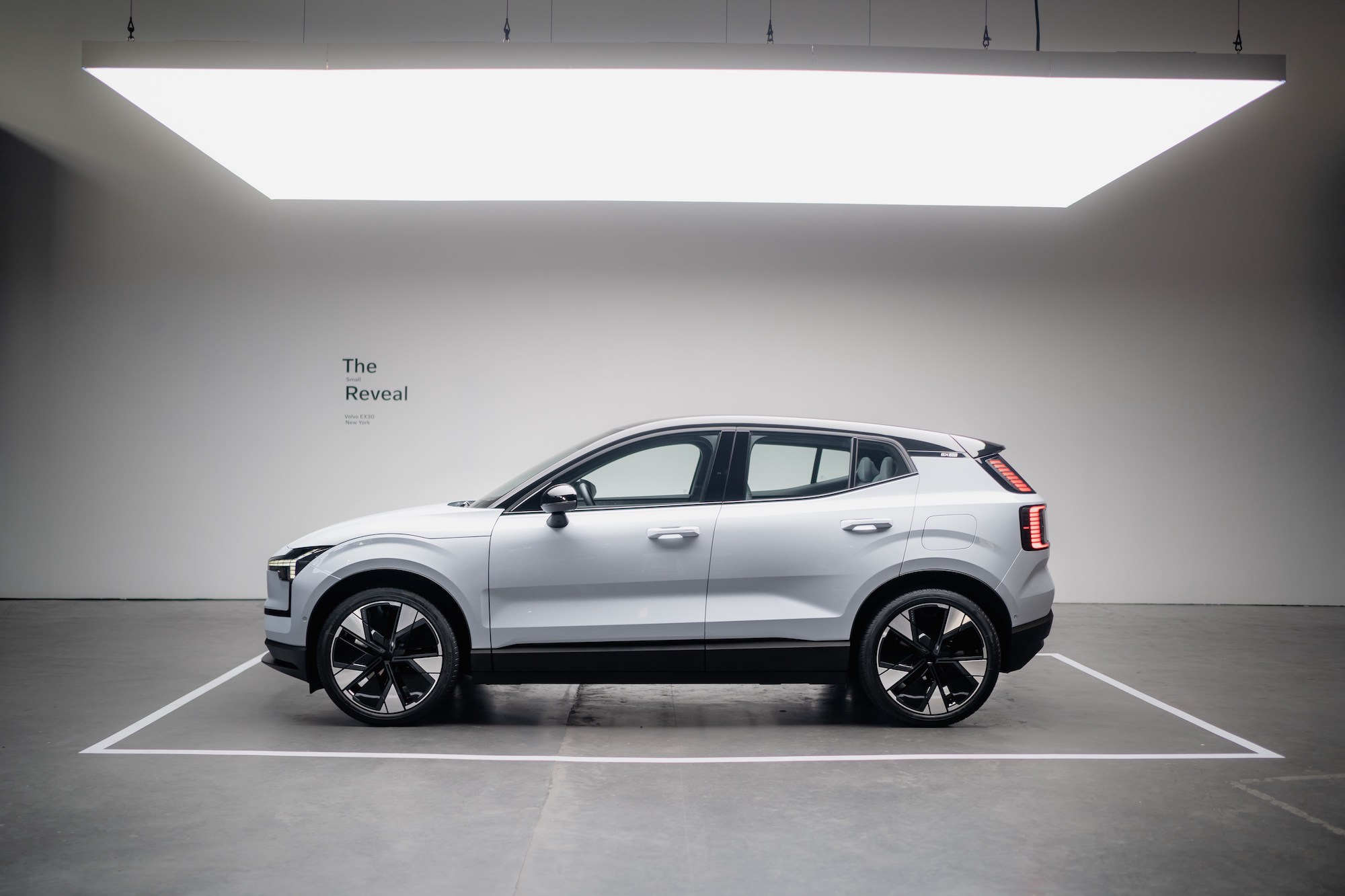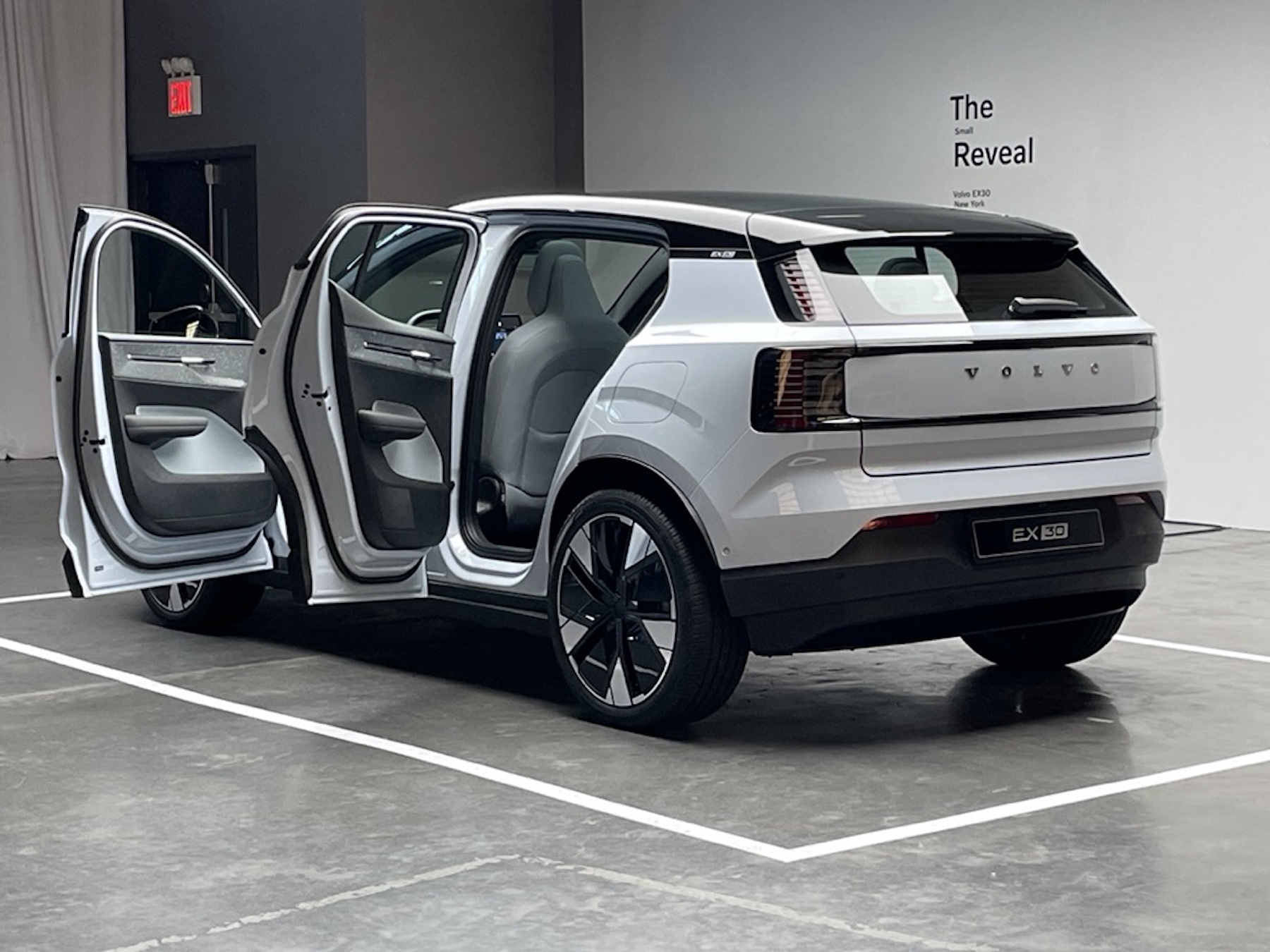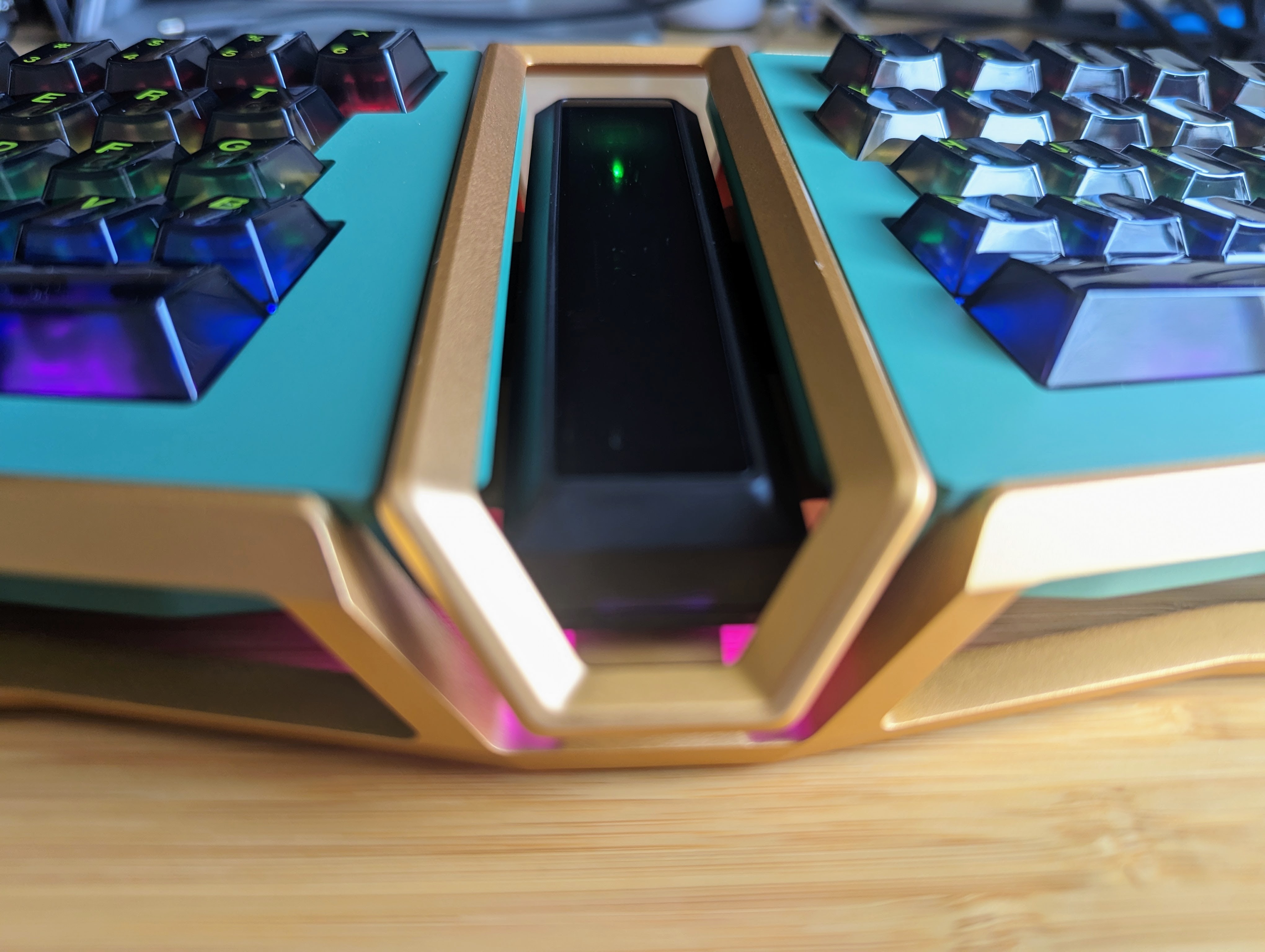Almost a decade ago, Volvo drove into the modern era by going big. Literally. The second-generation XC90 crossover that launched in 2015 helped reset a brand associated with boxy station wagons by offering innovative hybrid engines, striking styling and a big tablet center screen that felt right out of the Tesla playbook.
Now, the car that’s poised to be Volvo’s next big hit is actually pretty small — and affordable, too.
The EX30, which recently made its North American debut in New York, is a car full of firsts. Volvo’s first compact fully electric crossover is its quickest car ever and is outfitted with an innovative, yet cheaper interior made with sustainable materials — a combination the automaker believes is key to turning the EX30 into a mass-volume, mainstream success.
In short, this small car is a big deal for Volvo and a major evolution of the brand. And it’s already making a huge splash.
“The overall reception has been exceeding expectations, multiple times,” David Mele, the EX30’s product manager in the United States, said in an interview. “It’s been remarkably positive. We’re seeing that basically, every market that Volvo operates in is really excited about this car.”
Little car, big deal
A major reason is the EX30’s price tag: It starts at $34,950, instantly making it one of the more affordable EV options in the United States. In a year when electric adoption has seen some ups and downs — some critics worry demand is slowing as EVs pile up on dealer lots — the EX30 will come in well below the average $53,000 price tag these cars command lately.
Very few players exist in America’s affordable EV space right now: There’s the Tesla Model 3 and Model Y, selling like crazy after price cuts and tax rebates; the Chevrolet Bolt, which General Motors reversed course on discontinuing; and a handful of others, like the Kia Niro EV and Hyundai Kona EV and Hyundai Kona Electric. The latter two can easily cross into the $40,000 range at dealer lots.
It’s not that most people aren’t interested in EVs, analysts say, but that they’re turned off by their prices at a time when interest rates are high and the economy faces uncertainty ahead. Data firm AutoPacific found in a recent survey that a price tag below $35,000 is what it would take for many people to flip the switch.
The EX30’s right in that sweet spot, undercutting even Volvo’s next-cheapest car, the compact gas or electric XC40, by a few thousand dollars. The EX30 is about 10 inches smaller than the XC40 and 20 inches smaller than Tesla’s world-beating Model Y crossover.
Previous attempts at compact cars haven’t always gone great for Volvo. Today, its top-selling models in the U.S. are the midsize XC60, followed by the bigger XC90. Past entrants like the compact C30 hatchback and V50 never made a big sales splash, either.
In a lot of ways, the EX30 is risky, but Volvo is banking on that electric powertrain to attract customers it wouldn’t have had before.
Mele said the target EX30 customer is “pre-family” buyers without kids or even “post-family” parents and grandparents. It could be a lot of buyers’ second or third car, or their first EV, and their first Volvo. That’s… a lot of people.
In short, Volvo’s going for mass appeal on this one — something it hasn’t really gone in for terribly often before. “It’s not going to be a niche product,” Mele said. (He declined to discuss sales targets for the EX30.)
Swedish roots, Chinese production
Scale fits with Volvo’s goals of going “half-electric” by 2025 and all-electric by 2030, Mele said. But it’s also a key part of initiatives driven by Volvo’s Chinese parent company, Geely Holding Group. Between Volvo, the more performance-focused Polestar, the British sports car maker Lotus and several EV-focused brands not sold in America like Lynk & Co, Geely is increasingly rising as the Chinese auto conglomerate looking to take over the world — perhaps even without its customers realizing it.
In fact, like just a handful of other cars sold in the U.S. these days, the EX30 will be made in China. That means it won’t be eligible for any U.S. tax credits and that it’s subject to a 27.5% tariff on Chinese-made vehicles — making that price tag even more impressive. (“Anything we have to pay to the government is accounted for in that price,” Mele said, declining to speak on the potential profitability of the car.)
Mele said Volvo is still evaluating where the car will be built over the long term.
While Volvo won’t say anything further officially, it’s plausible that the company could decide to follow the moves of several competitors and put production somewhere in North America. Volvo is already expanding its South Carolina plant to build its flagship EX90 electric crossover. “Our goal, long term, is to build cars where we sell,” Mele said. “That’s both just good from a manufacturing perspective but also cuts down on carbon emissions.”
Other markets aren’t as aggressive on China tariffs, of course. But at a time when European automakers are deeply concerned about lower-cost Chinese cars eating their market share on their home turfs, Volvo is one European brand that could have its kladdkaka and eat it too.
Specs that matter
While Americans have historically been wary of Chinese-made, cars given past perceptions and political tensions, the EX30 could be enough of a deal that it will test just how much we care; the long-held Swedish brand identity might help.
The EX30 offers two battery packs: a 69 kWh nickel-cobalt-manganese unit for North America, and a cheaper, lower-range 51 kWh lithium-iron-phosphate unit for other markets. The EX30 has two powertrain setups. The base model is a single-motor, rear-wheel drive car boasting 272 horsepower and 275 miles of range. That model does zero to 60 mph in a respectable 5.7 seconds. Upgrading to the Twin Motor Performance variant gets dual motors for all-wheel-drive and 422 horsepower, plus a zero to 60 mph time of just 3.4 seconds. No Volvo has ever been that quick from the factory, the company says.
Its 12.3-inch vertical touchscreen, which runs almost all major control interfaces as there’s nothing in front of the driver, much like a Tesla, runs the latest version of Google’s Android operating system. Wireless Apple CarPlay is also standard, as is wireless phone charging, standard 5G connectivity, over-the-air software updates, four USB-C ports, and what Volvo says is the ability to fast-charge from 10% to 80% in 26.5 minutes.
In other words, while it’s small and affordable, it doesn’t seem like some penalty box economy car. And it comes in some fun colors, like Cloud Blue or the especially daring (for Volvo, anyway) Moss Yellow. The EX30 is expected to go on sale next summer.
And while Mele confirmed the EX30 will launch with the standard CCS charging port, Volvo’s models will be able to access Tesla’s Supercharger network with an adapter in 2024, and that plug will be standard from 2025 onward, which could make it even more enticing as someone’s “first EV.” Mele said that’s exactly the goal.
“With this car, we’re sort of democratizing battery electric vehicles,” he said.

















 English (US) ·
English (US) ·